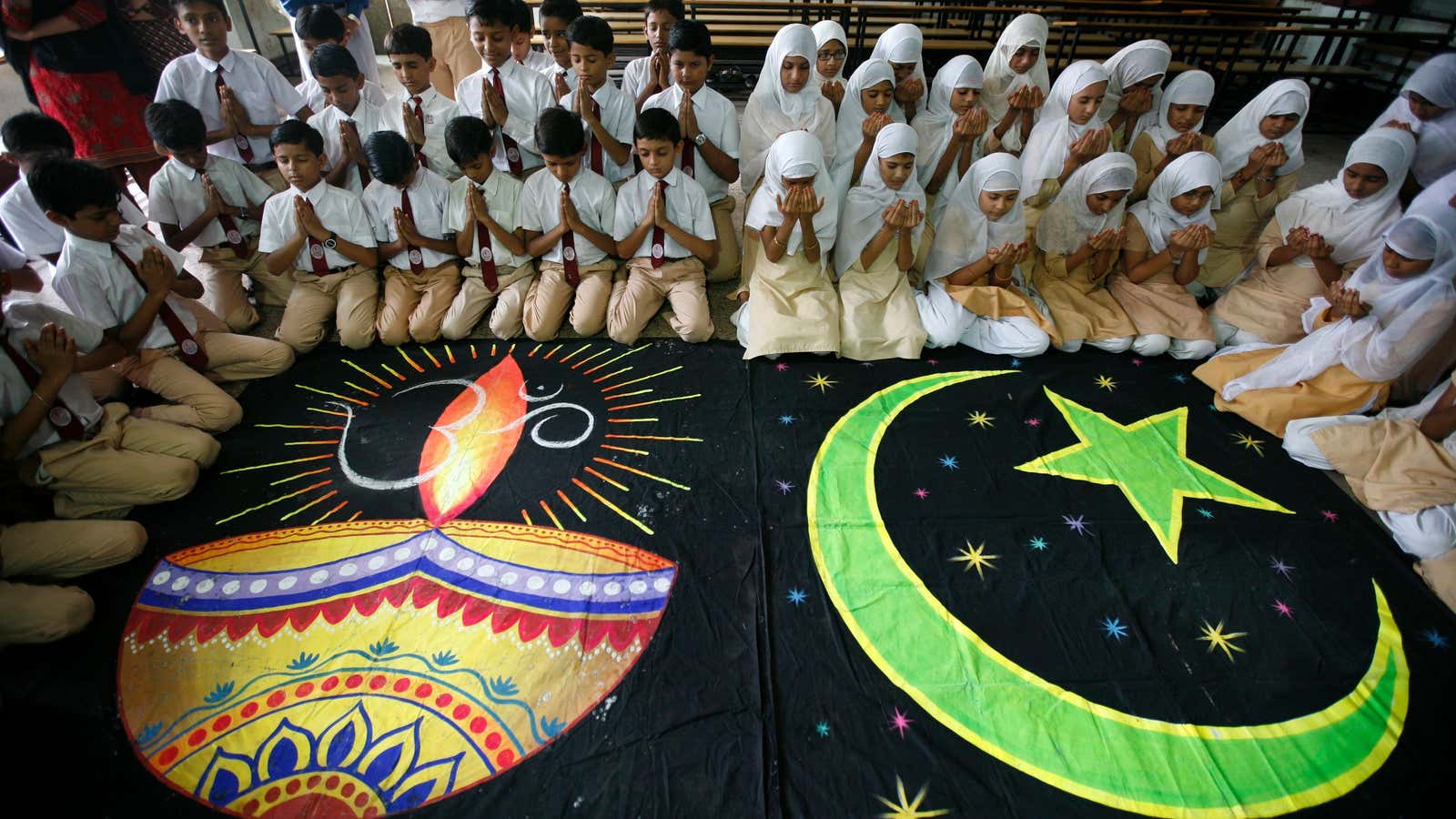India, one of the world’s most religiously diverse countries, is also one of the most religiously fragmented. A 2017 Pew Research Center analysis of 198 countries ranked India fourth in the world for religious intolerance, trailing behind only Syria, Nigeria, and Iraq.
In fact, tensions between the country’s two largest religious groups—Hindus and Muslims—have long divided India, but the rifts have intensified in recent years. Yet a study published this week (June 13) in the journal Child Development carries a hopeful message: Indian children, both Hindu and Muslim, are actually pretty tolerant of one another’s norms and rules. This is important because, as the study authors write, “conflicts arise when members of one religion apply their norms to members of another religion.”
Hindu and Muslim kids in India accept each other’s norms
The study surveyed 63 Indian children between the ages of nine and 15 years old in Gujarat, India, a region with a dark history of sectarian violence. In the experiment, the children were shown sets of vignettes in which Hindu and Muslim characters violated two Hindu norms (such as eating beef), two Muslim norms (not making a pilgrimage to Mecca even when given the opportunity), and one universal moral norm (like not hitting another person). Children were then asked to judge these actions by answering a set of questions about them, such as, “Was what the character did okay/not okay? Why/why not? Do Hindus/Muslims think what he did is okay?”
The researchers found that the kids were more likely to say that they thought it was not okay for a character to violate his own religion’s norms than to violate the norms of the other religion. Sixty-seven percent of the kids thought it was not okay for a Hindu character to violate a Hindu norm, but only 9% thought it was not okay for a Hindu character to violate a Muslim norm. That was the case when the participants were shown a vignette of a Muslim child named Masood, who went to a restaurant and ate beef. The cow is a sacred animal in the Hindu tradition, but beef is not off-limits for Muslims. The children were asked if and why Masood’s action was okay or not okay, how severe of a violation it was, and whether other Muslims would think that the action was permissible.
The fact that most children said it was okay for Masood to eat beef, since he was not Hindu, illustrate that the children were largely comfortable with two systems of norms and values coexisting, without infringing on each other.
“Even in a region with a long history of high religious tension, we see impressive levels of religious tolerance among children,” said study co-author Audun Dahl. “Children think that people in different religions should follow their own norms—and that’s a starting point, a reason for optimism.”
Among other findings, the researchers found that Hindu children were less strict about in-group violations of Hindu norms than Muslim children. Muslim children judged it as not okay for Muslim characters to violate Muslim norms in 89% of cases, whereas Hindu children said it was not okay for Hindu characters to violate Hindu norms in only 62% of cases. And the study identified differences in religious tolerance based on age: younger kids were generally more likely (56%) to say that actions were not okay than were older children (45%).
These findings held true even among children who did not have a lot of exposure to members of other religious groups. In a separate experiment with 37 Hindu children from a majority-Hindu, K-12 school for low-income children in Vadodara, the researchers found that the participants mostly thought Hindu norms should only be followed by Hindu characters, while expecting Muslim characters to follow Muslim norms.
And yet, despite the study’s hopeful message of religious tolerance, it also showed the degree of religious segregation experienced by the children who were surveyed. Kids from the second experiment reported having significantly more friends of their own religious group than of the other religious group. They also said they spent more of their time outside of school with friends from their own religious group, and expressed more positive attitudes toward their own religious group.
For those hoping to change norms of religious co-existence in India, it seems the example set by the country’s children might be a good place to start.
